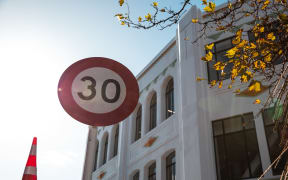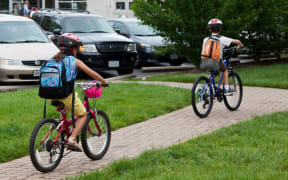
Parua Bay village's 30km/h speed zone needs additional speed bridges to property slow vehicles still travelling too quickly past local Pārua Bay School (back left distance) says resident Colin Edwards. Photo: Northern Advocate / Michael Cunningham via LDR
Plans are underway to review the controversial new $700,000 Whangārei Heads slower speed zone amid strong local opposition.
Whangārei District Council (WDC) brought in blanket slower speeds for the Whangārei Heads speed catchment in two stages - on 15 December then 2 February - as part of the former government's 'road to zero' safety mandate.

WDC Whangārei Heads councillor and resident Patrick Holmes said the review would be done as part of the normal process.
Holmes said the slower speed introductions came after public consultation, and he would naturally represent the views of his community to the council as part of the review.
Local Democracy Reporting Northland has asked the council when the review will happen, and about other slower speed review aspects.
'It's all been a bit OTT'
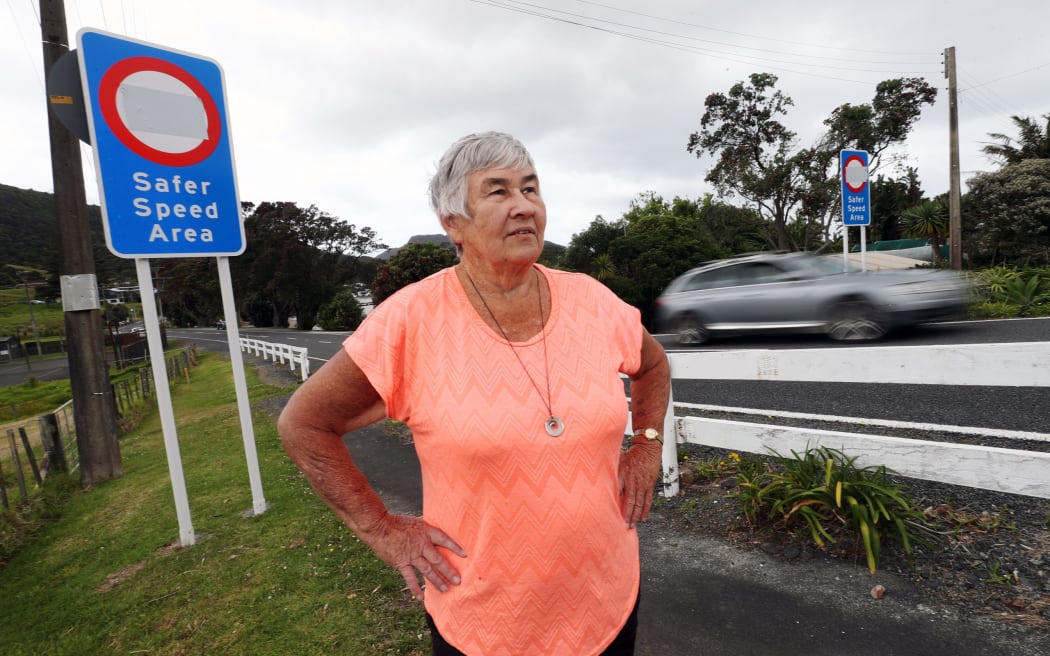
Taurikura's Jan Boyes at the Whangārei Heads coastal settlement ahead of the reveal of what was formerly a 50km/h speed area's new 30km/h slower speed sign as part of changes she says are OTT and micro-managing traffic speeds. Photo: Northern Advocate / Michael Cunningham via LDR
The new lower speed limits have many in the community up in arms.
"Bringing in the slower speeds has slowed vehicles down a bit overall," Whangārei Heads Citizens Association chair Jan Boyes said.
"But it's all been a bit OTT. We don't need to be micromanaged."
The new slower speed zones cover between Onerahi and Ocean Beach, including communities at Pārua Bay, Waikaraka and Taurikura, as well as the main road to Pātaua South.
Pārua Bay village has emerged as the epicentre of strongest community dissatisfaction with the new changes, which came in up to two months ago.
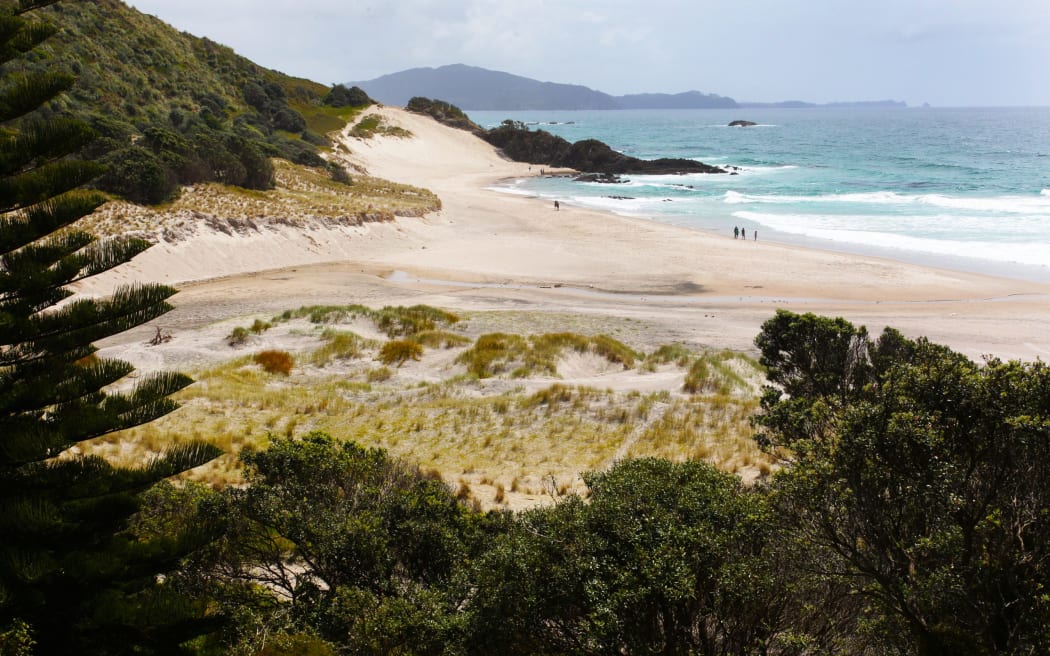
Ocean Beach draws people via Whangārei Heads new ever-changing slow speed zones. Photo: NZME / LDR
The section of Whangārei Heads Rd between Onerahi and Pārua Bay is also sparking outrage. Dozens of often short-distance chunks of speed zone changes now proliferate along this stretch.
Narrow, winding roads
Holmes said the quantity of community feedback on the new changes was second only to that of when Cyclone Gabrielle hit the area.
The lower speed limits were introduced because the Whangārei Heads catchment had some of the most dangerous roads in the district. These roads were narrow and winding with blind corners.
Holmes said the speed changes came after thorough public consultation and expert analysis.
He said slower speeds were good for the area, but accepted there had been strong reaction to the short chunks of different speed zones and Pārua Bay's 30km/h limit.
Residents frustrated by changing speeds
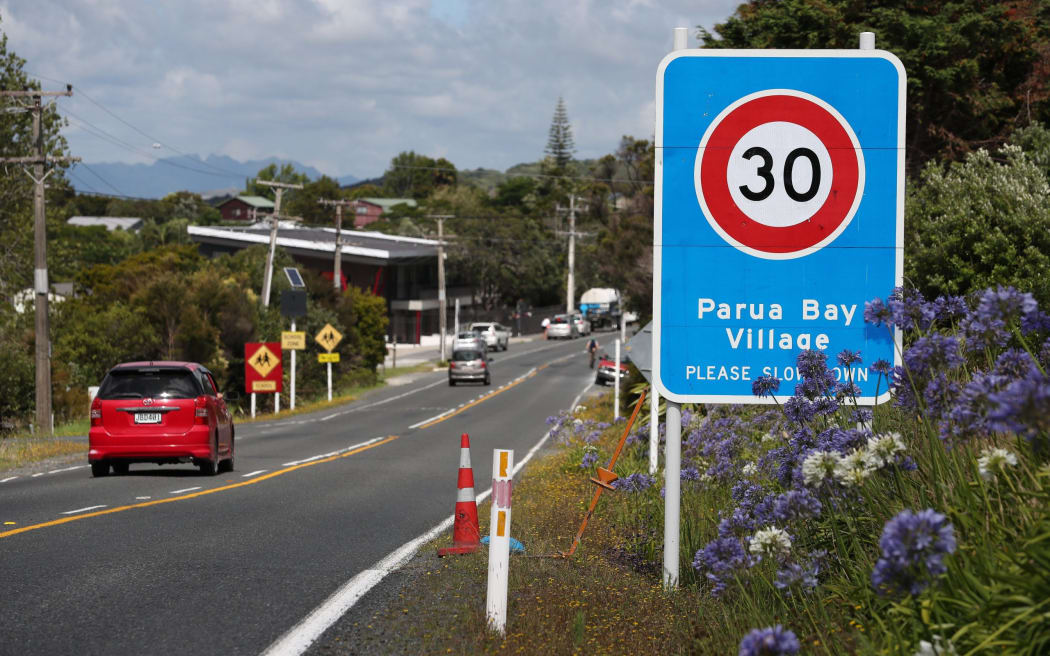
Pārua Bay village is the epicentre of strong community reaction to Whangārei heads' new slow speed zone. Photo: Northern Advocate / Michael Cunningham via LDR
Pārua Bay's Ritchie Road resident Shane Peebles said there were now 10 speed zone changes between his place and Onerahi.
"That's a speed zone change about every 1.2km," Peebles said.
Boyes said it was confusing for motorists.
"You have to keep looking at your speedo, to work out what speed you're doing and by the time you've got that sorted you're suddenly in the next new speed zone area," Boyes said.
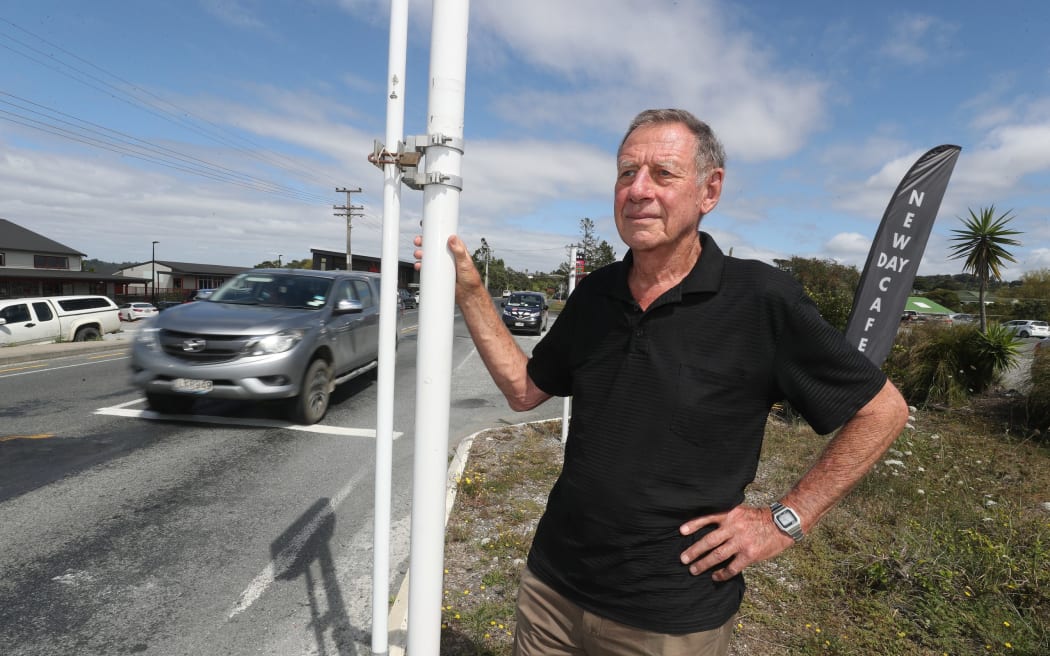
Pārua Bay's Colin Edwards at the western end of the village's contentious two-month-old 30km/h slower speed zone. Photo: Northern Advocate / Michael Cunningham via LDR
Pārua Bay resident Colin Edwards said people were still typically driving about 20k/h faster than any of the new speed limits.
"Sadly I have to admit there are times when I blink and forget the current limit - is it 30, 40, 50, 60, or 80," Edwards said.
'People are slowly adjusting'
The through speed on Pārua Bay village's Whangārei Heads Rd main drag has been cut by 40 percent from 50km/h to 30km/h for about a kilometre because of the presence of Pārua Bay School.
The previous speed limit was variable and included reduction to 40km/h during school hours in the school term.
Holmes said parents of Pārua Bay School children were pleased with the new changes, which they felt improved safety.
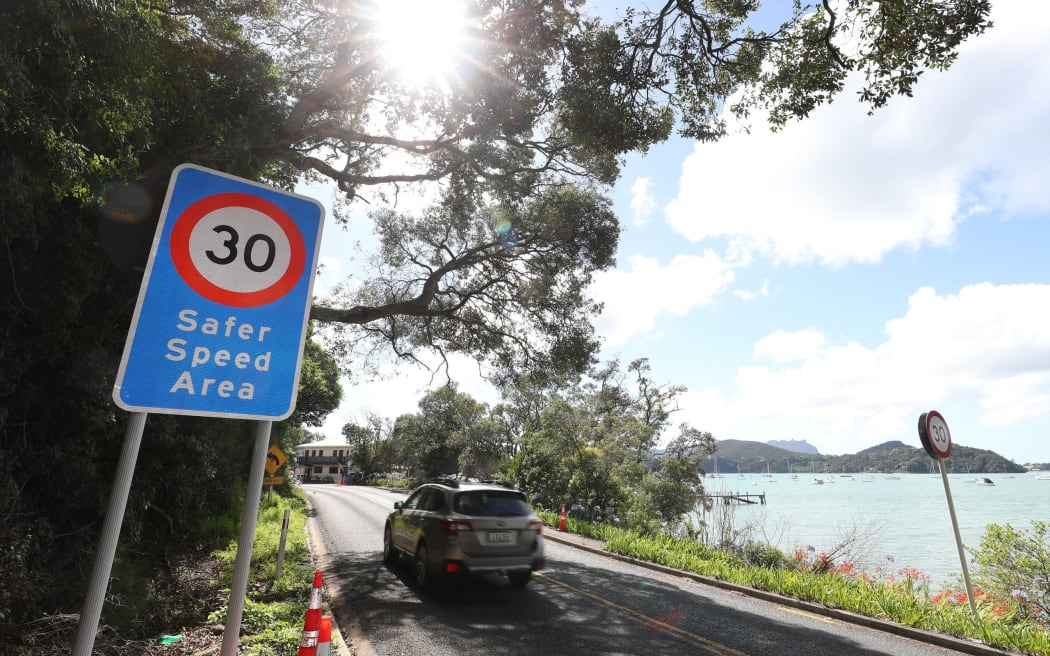
The new slower 30km/h speed zone around Pārua Bay pub has been generally well received by the community. Photo: Northern Advocate / Michael Cunningham via LDR
Pārua Bay village resident Tony Climie said the majority of people were in favour of Whangārei Heads' new speed reduction move.
"It's great, but there's been a bit of a difficult transition. People are slowly adjusting to it," Climie said.
He said the improved safety outweighed the small inconvenience of having a few extra minutes added to a trip.
Climie said most local residents appreciated the slower speeds and therefore improved safety locally.
This was in contrast to those who wanted to hurry to and from work on their daily commute into Whangārei, from what had now become a dormitory for the city.
He said those complaining about the slower speed zones needed to realise they would likely not have been needed if road users had been driving to the old speed limits.
The lower speed zones had slowed traffic overall.
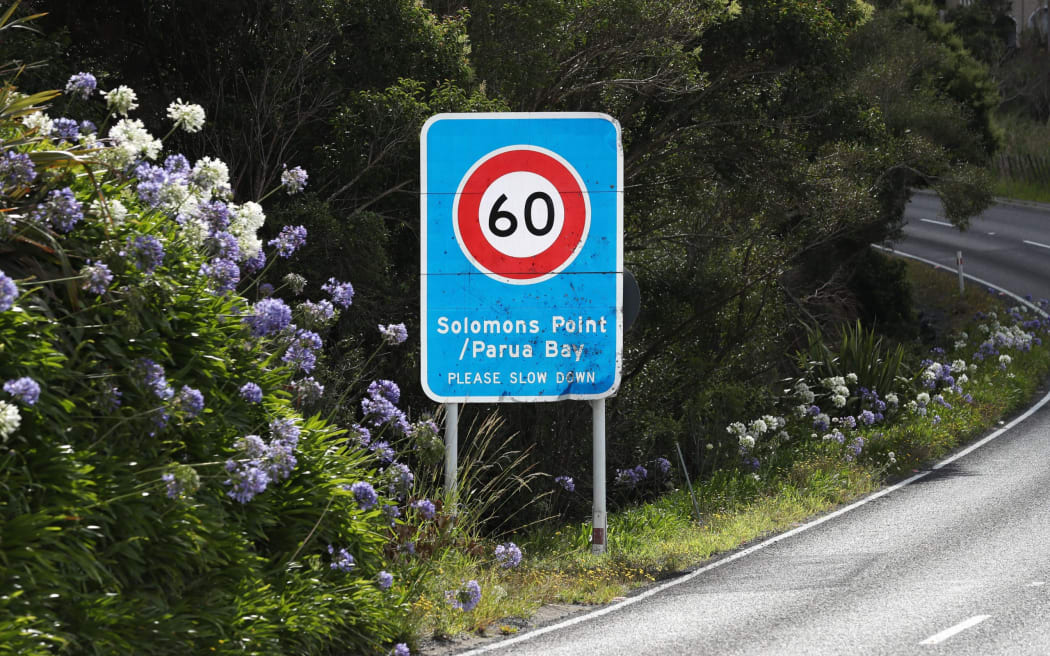
Solomons Point speed has now dropped to 60km/h has dropped by 40 percent under the slower speed regime Photo: NZME / LDR
Pārua Bay village's new one-kilometre permanent 30km/h speed zone is due to the presence of the local school, and came in under the previous government's national transport directive.
The new government has signalled a change to this around-the-clock mandate, but has not yet provided new policy details.
Holmes said it was not clear what these would mean for the future of the village's currently 24/7 30km/h speed zone by the school.
Peebles said the zone should only be in place during school hours. Schools operated for 39 weeks of the year, but the 30km/h speed zone was in place year round.
Should the speed limit return to 50km/h?
Meanwhile, Local Democracy Reporting Northland understands the council is looking closely at the about 300m of Pārua Bay village's 30km/h zone at its western end start between the Pārua Bay community centre and Ritchie Road.
This has been a major bone of contention for the community, many of whom want the speed on that section returned to 50km/h.
Pātaua Residents and Ratepayers Association chair John Emett said he supported slowing speeds, but said the new changes seemed idiotic in places.
"It's hard to understand how some of the new speed zones were achieved," Emmet said.
Emett said the Pātaua South village community was extremely disappointed its long-sought efforts to reduce speed through its hamlet had not been achieved with the slower speed limits.
Pātaua South resident Peter Ogle said the new speed zones seemed irrational.
"I'm just about to drive along Ponsonby Road where the speed limit is 40km/h and there are thousands of people around," Ogle said en route to Auckland while being interviewed.
Holmes said the review would consider community feedback.
"But people need to remember that we can't give everybody [what they] want, that's not possible," Holmes said.
LDR is local body journalism co-funded by RNZ and NZ On Air.
